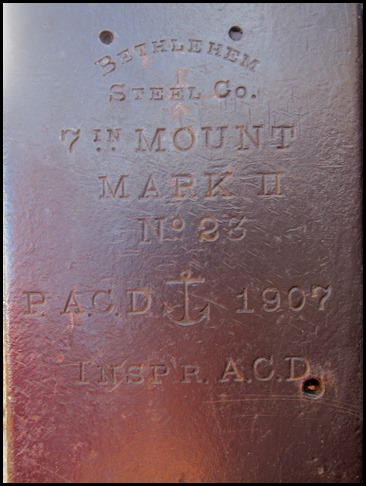Bear and the Cannons

Beez Neez now Chy Whella
Big Bear and Pepe Millard
Sat 28 Sep 2013 22:57
|
We Visit the World War Two Cannons of Bora
Bora 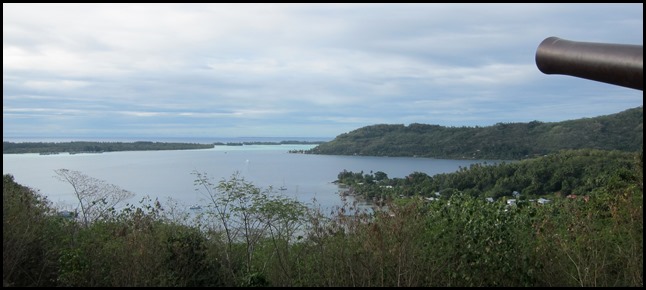 On the 27th of January 1942, a real armada
of two cruisers, two destroyers, two cargo boats, two troop ships and a tanker
left Charleston Harbour, South Carolina for Bora Bora. On board the vessels were
four thousand, four hundred and fifty troops and one hundred and seventy eight
officers, under the command of Admiral Turner. The mission was called “Operation
Bob Cat”.
On the 17th of February 1942, the armada
arrived on Bora Bora. Without knowing who was aboard the ships the population
went to warmly welcome their visitors in outrigger canoes. Twenty thousand tons
of material was landed on float stages and small craft. The Americans found
everything had to be done. There was not enough drinking water and no useable
roads for their heavy equipment. They began to build a road all the way around
the island and set up water supplies. On the 9th of June 1942, the first gas
tank was in operation, twenty three feet high and fifty two feet across, it was
able to hold one hundred and fifty thousand liters of petrol. By July there were
twenty others of a similar size and ten that were able to hold ten thousand
barrels of heavy oil. The whole lot covered with coconut trees not far from the
beach.
 The two pictures above, we had seen in
tourist magazines, and wanted to get them for ourselves. Our last day on Bora
Bora was a ‘must try’ to satiate the skippers trigger finger, so after lunch,
off we went in Baby Beez. Our old friend Arctic is
the only boat in shot.
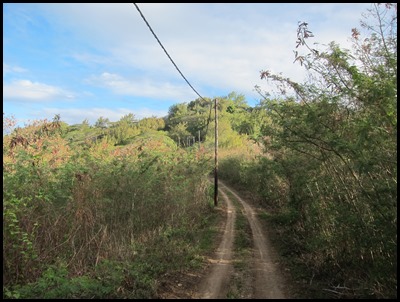 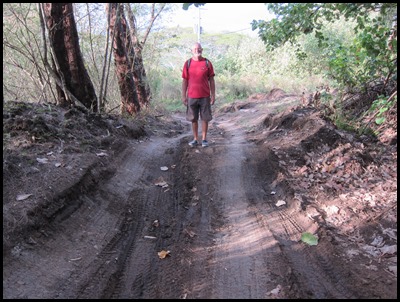 After a false start, we finally found the track and up we went.
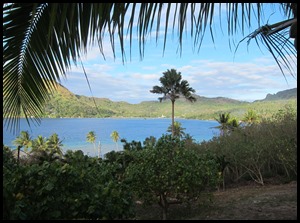 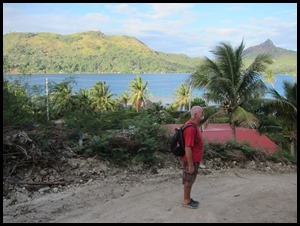
 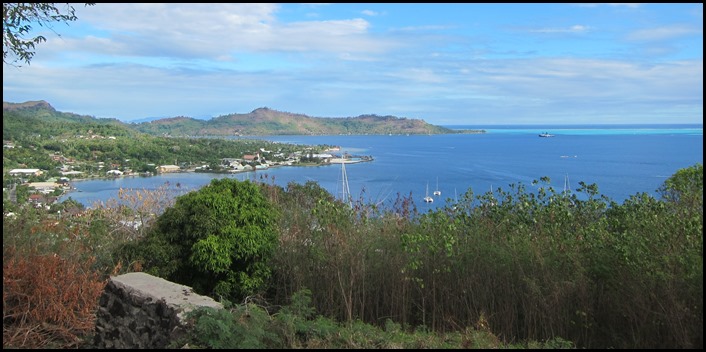 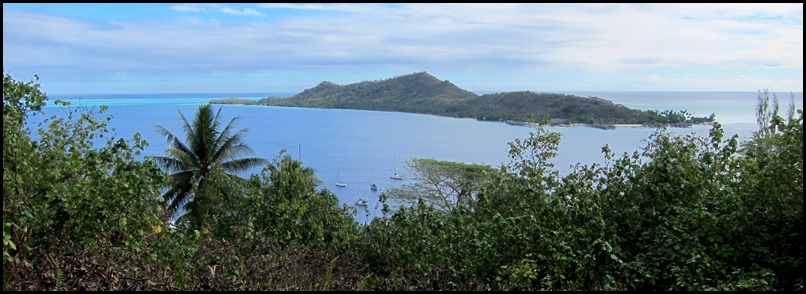 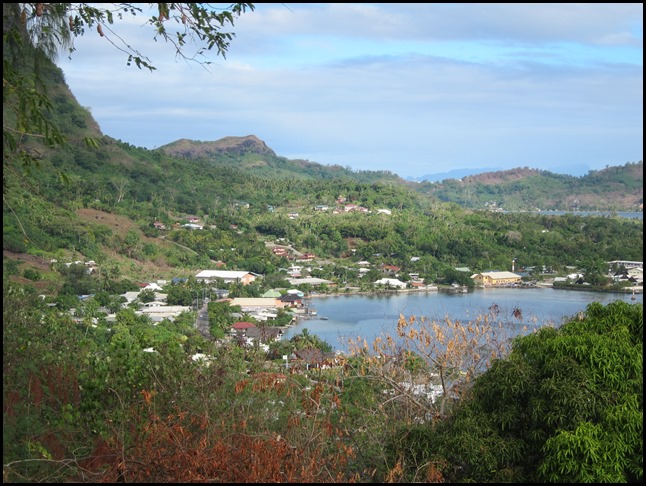 Nice views on the way
up.
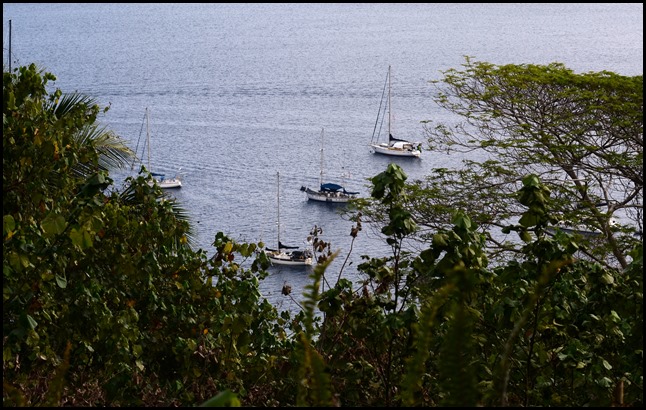 Just before we reached the cannons, we
spotted Beez (nearest in) sitting
quietly.
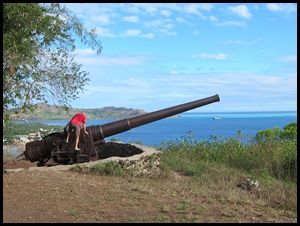

 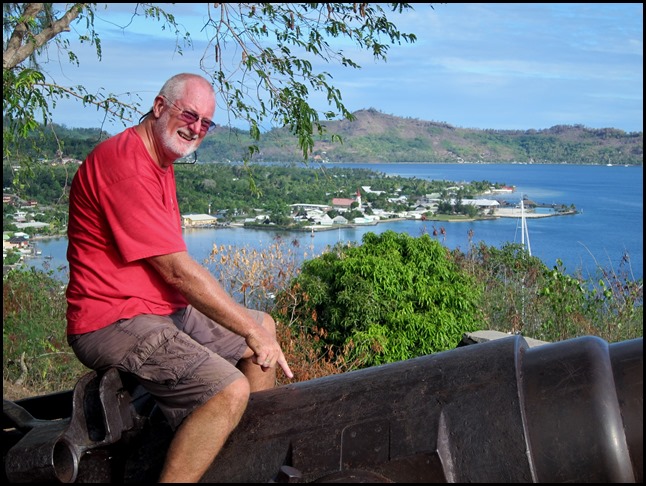 Pure bliss to watch himself
mount the first chap.
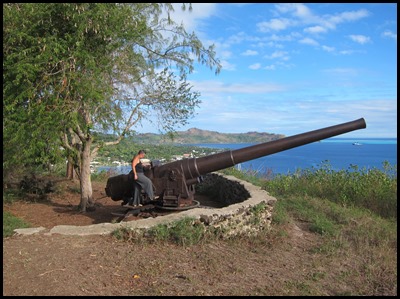 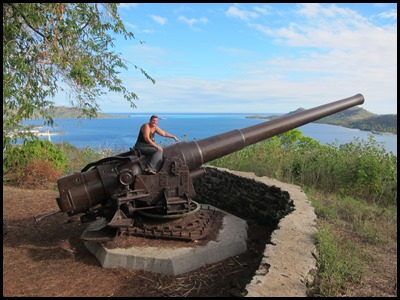 Yes, I did too.........
The Americans fixed eight 7-inch hill
cannons, three inch anti-aircraft batteries. Eight seaplanes were in charge of
air cover during the building of the runway. The small Motu Mute was chosen and
construction began on the 16th of December 1942. The whole air base was
operational by the 15th of April 1943. The airstrip measured one and a quarter
miles and one hundred and forty five feet wide. In the meantime the battlefront
on the Philippines settled down.
The base was officially closed on the 2nd of June 1946. Only one former US serviceman, Fred Giles, returned to the island. The World War II airstrip, which was never able to accommodate large aircraft, was French Polynesia's only international airport until Faa'a International Airport was opened in Papeete, Tahiti, in 1960.
During World War I and World War II,
Bethlehem Steel was a major supplier of armour plate and ordnance to the U.S.
armed forces, including armour plate and large-caliber guns for the
Navy.
In the 1930’s, the company made the steel
sections and parts for the Golden Gate Bridge and built for Yacimientos
Petrolíferos Fiscales (YPF), a new oil refinery in La Plata City, Argentina,
which was the tenth largest in the world. During World War II, as much as
seventy percent of airplane cylinder forgings, one-quarter of the armour plate
for warships, and one-third of the big cannon forgings for the U.S armed forces
were turned out by Bethlehem Steel.
Bethlehem Steel ranked seventh among
United States corporations in the value of wartime production contracts.
Bethlehem Shipbuilding Corporation's fifteen shipyards produced a total of 1,121
ships, more than any other builder during the war and nearly one-fifth of the
U.S. Navy's two-ocean fleet. It employed as many as 180,000 persons, the bulk of
the company's total employment of 300,000.
Eugene Grace was president of Bethlehem
Steel from 1916 to 1945, and chairman of the board from 1945 until his
retirement in 1957. Eugene Grace orchestrated Bethlehem Steel's wartime efforts.
In 1943 he promised President Roosevelt one ship per day, and exceeded the
commitment by fifteen ships.
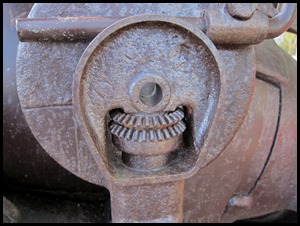

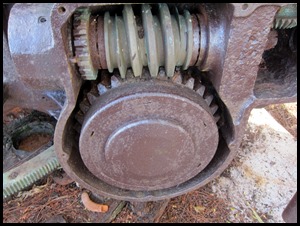 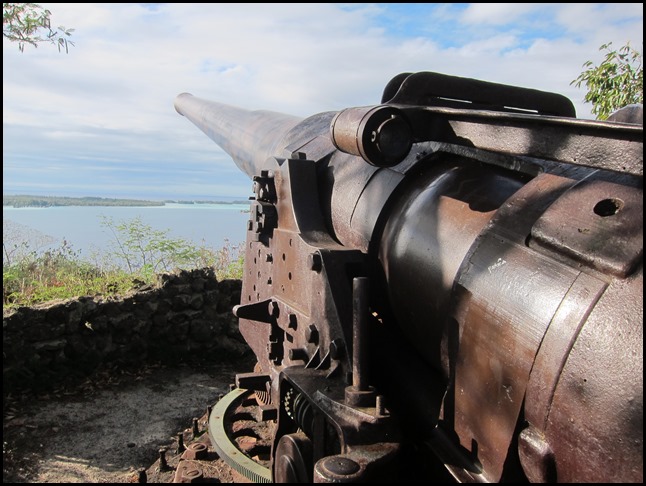 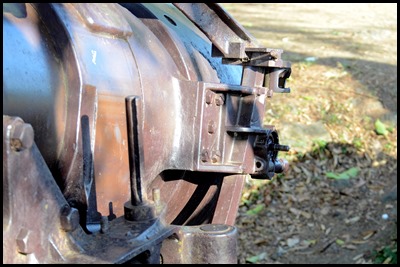
 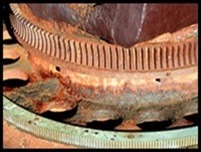

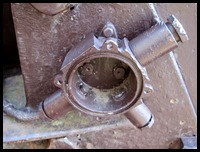
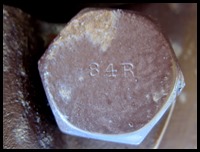 The war effort drained Bethlehem of much
of its male workforce. The company hired female employees to guard and work on
the factory floor or in the company offices. After the war, the female workers
were promptly fired in favour of their male counterparts.
On Liberty Fleet Day, the 27th of
September 1941, President Franklin D. Roosevelt was present at the launching of
the first Liberty ship SS Patrick Henry at Bethlehem’s Fairfield (Baltimore)
yard. Also launched that same day was the Liberty SS James McKay at Sparrows
Point and the Emergency vessel SS Sinclair Superflame at Fore River in Quincy,
MA.
In 2001, Bethlehem Steel filed for
bankruptcy. In 2003, the company's assets, including its six massive plants,
were acquired by the International Steel Group.
In 2007, the Bethlehem property was sold
to Sands BethWorks, and plans to build a casino where the plant once stood were
drafted. Construction began in fall 2007; the casino was completed in 2009. The
casino had difficulty finding structural steel for construction due to a global
steel shortage and pressure to build Pennsylvania's tax-generating casinos.
16,000 tons of steel were needed to build the $600 million complex.
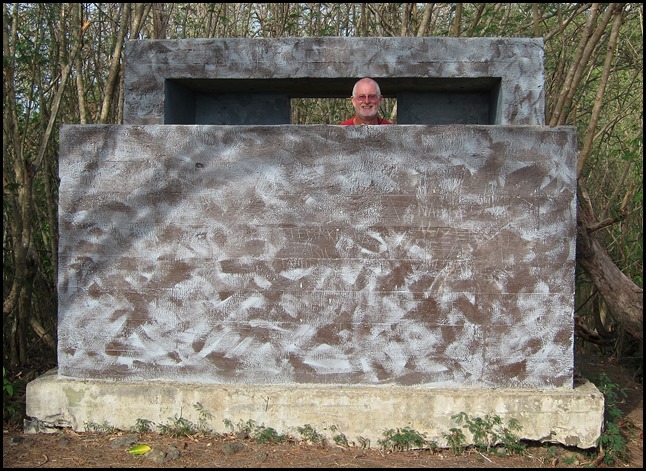  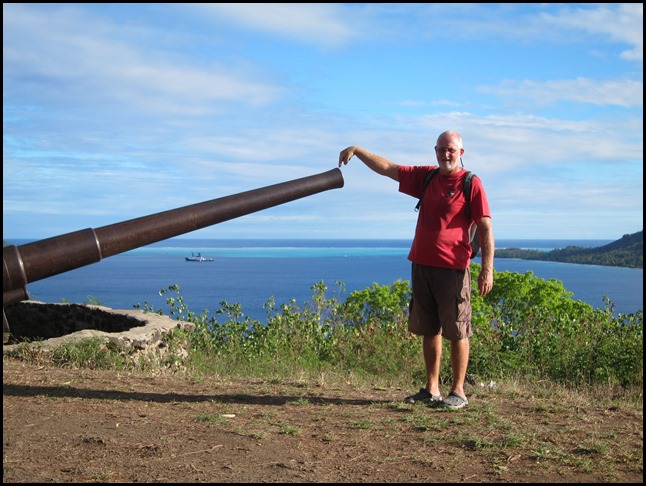 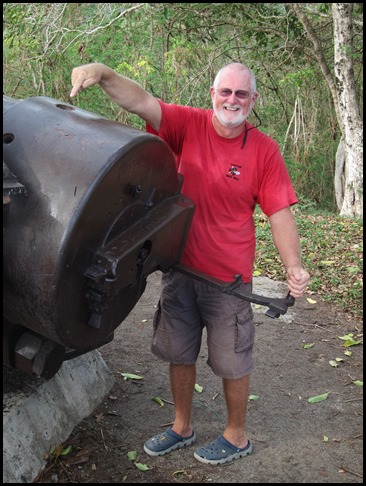  ALL IN ALL WHAT A
FIND
VERY MODERN, VERY NEW
|
